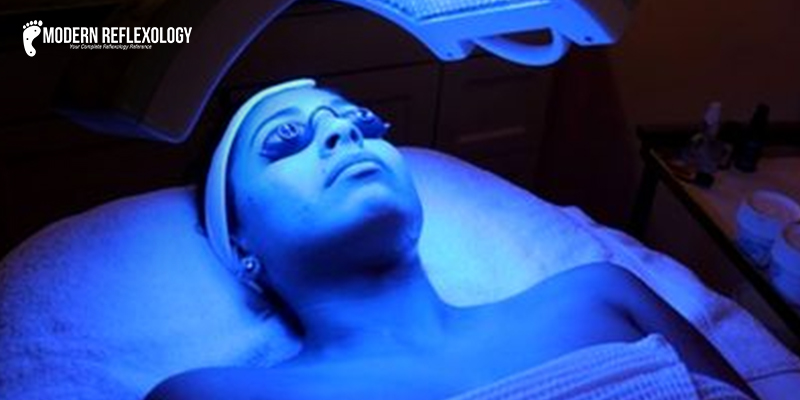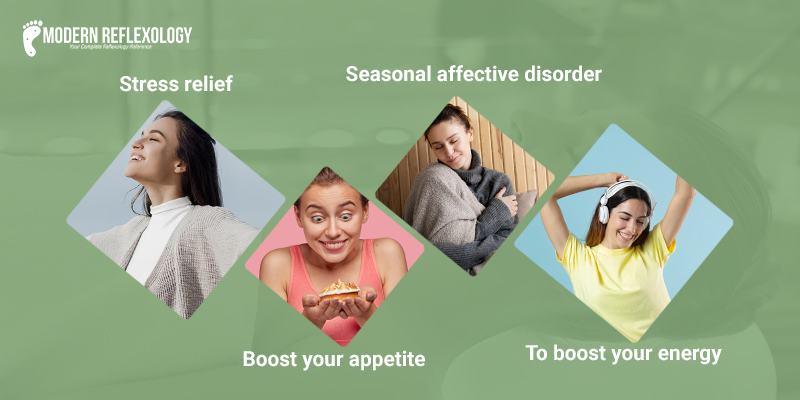Chromotherapy, another name for color therapy, is a type of therapy that treats specific physical and mental health issues with the use of color and light. This type of treatment dates to the ancient Egyptians. They used rooms full of sunlight and tinted glass as healing spaces. The premise behind color therapy, also referred to as chromotherapy, is that colored lighting and color can potentially enhance both physical and emotional well-being. Nevertheless, additional scientific study is required to substantiate its purported advantages.
What is Color Therapy?
Color light therapy, also called chromotherapy, is predicated on the notion that colored lighting and color might aid in treating physical or mental illnesses. This theory holds that they subtly alter our biology and temperament. There is a long history of color therapy. Records show that ancient Egypt, Greece, China, and India all once used color and light treatment. For many, color was a divine entity, it was the manifestation of light. Nowadays, most people consider color therapy to be an adjunctive or alternative kind of treatment. For instance, Chroma therapy saunas are offered by spas like sunlight, which asserts that their patrons benefit from them. Blue light is an option for sauna users who wish to unwind or feel at ease. If they wish to detoxify, they can go for pink light.
Types of Chromo Therapies

It is the theory behind color therapy that various hues have varying effects on the body.
- Red: When someone is feeling down or exhausted, red is employed to revitalize or invigorate them. Red, nevertheless, can also agitate those who are already tense.
- Blue: To alleviate pain and depression, Chroma therapists employ blue. For those who suffer from insomnia or other sleeping difficulties, darker blue hues may be explored as they are also believed to have sedative qualities.
- Green: Green is the hue of nature, and according to aromatherapists, it can help relieve stress and relax a person.
- Yellow: You can use yellow to lift your spirits and feel happier and more upbeat.
- Orange: Orange, much like yellow, can be used to elicit happy emotions from people. The bright warm color is also thought to be able to stimulate appetite and mental activity.
Benefits of Color Therapy

Over the decades, color therapy has been purported to provide several benefits ranging from physical to mental, including:
- Stress relief: Certain colors like blue and green are thought to have soothing effects on people who are stressed or anxious.
- Boost your appetite: Warm and stimulating colors are thought to boost your appetite when you struggle with having a desire for food.
- Seasonal affective disorder: People mainly suffer from seasonal affective disorder during colder weather because of the lack of sunlight. Certain types of bright light therapy have been shown to be of benefit for this mood disorder. Color therapy also suggests the unproven idea that warm colors like yellow and orange could also help with this.
- To boost your energy: Colors such as red and yellow are believed to boost your energy and make you more motivated.
How to Practice Color Therapy At Home
You can begin to incorporate elements of color therapy into your daily life in simple ways. Minimal changes to your environment or routine can substantially impact your overall well-being. Here are a few methods for independent color vibration therapy practic:
1. Get Outdoors
Natural hues are calming and enticing. Furthermore, green hues have grounding attributes, allowing an increased connection with yourself and your environment. Additionally, natural blue light (not artificial) facilitates rejuvenation and calmness. Try scheduling some time each day to spend time outside, even if it’s just for a short while, as nature has a positive effect on mental health.
2. Be Smart with Color Choices
Feeling sad? Feeling overwhelmed? Consider taking note of any colors that leave you feeling uncomfortable or stressed. Be smart with your color choices. Wear warmer colors that elevate your mood or paint the walls of your home in similar hues. This can also help you be more productive!
3. Limit Artificial Blue Light
Artificial blue light decreases serotonin levels. By limiting exposure to blue light, you may notice a change in your overall mood. Try taking a break from looking at your laptop, phone, or TV. Or you can change the color balance on your devices, so the displays are dimmer and warmer.
4. Change the Intake Method for Color Therapy
If one method of color therapy isn’t working as well as you’d like, consider trying an alternative. Instead of wearing a specific color shirt, switch out the artwork in your home office. Or change the lightbulb in your bedroom and opt for a warmer tone.
5. Tap Into Your Creative Side
Get those markers, crayons, pens, and colored pencils ready! Use color and art to express yourself and notice the colors that bring you joy. Which colors make you feel overwhelmed or stressed? You can better understand how specific colors impact you by tapping into creativity.
Final Words
In conclusion, chromotherapy offers a fascinating approach to holistic healing, drawing upon the therapeutic properties of color to promote physical, emotional, and mental well-being. Through various types of treatments and techniques, individuals can harness the power of different hues to address a wide range of health concerns and enhance overall vitality. From the soothing effects of blue to the invigorating qualities of red, each color carries its own unique energy and significance in chromotherapy. By understanding how different colors influence our bodies and minds, we can tailor treatments to suit individual needs and preferences, whether it’s to alleviate pain, reduce stress, or boost mood.
Green. The earth and the natural world are both green. It has a calming effect on the body and mind and is fundamentally harmony and balance.
Blue. Blue is a color that chromatherapists use to try to impact pain and despair. For those who suffer from insomnia or other sleeping difficulties, darker blue hues may be explored as they are also believed to have sedative qualities.
Red light treatment is intended to treat melasma by stimulating the creation of collagen, decreasing inflammation, and accelerating skin repair.
Green. Green light therapy works by reducing the development of melanocytes, which are cells that generate melanin in the dermis’ bottom layer. This lowers dark patches and hyperpigmentation.
Red has the lowest energy since it has the longest wavelength of all visible light. Violet light has the maximum energy of all visible light colors since it has the shortest wavelength.

Comments are closed